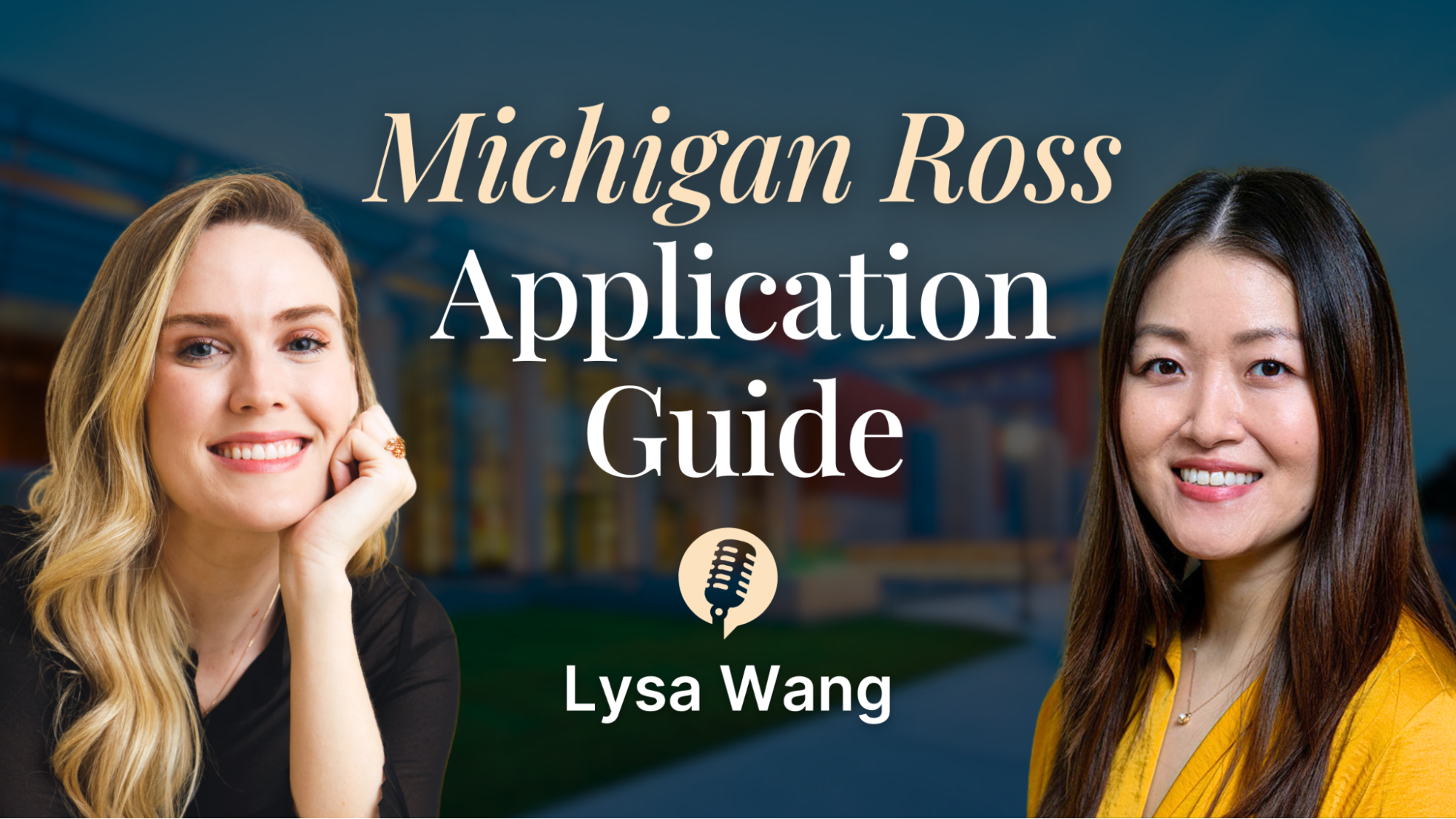UPDATE: This post was originally published on June 8, 2018. It has been updated with new tips and information below.
The allure of prestigious US MBA programs isn’t difficult to understand; their brilliant faculty and student communities, proximity to major companies, well-connected alumni and valuable brand names can transform careers.
Of course, what makes these programs prestigious also makes them competitive; Harvard Business School’s 2024 class saw a 12% acceptance rate and Stanford remained highly selective with a 6.8% acceptance rate.
While applying to the best US business schools, many applicants overlook the importance of a well-written MBA CV, missing a key opportunity. Your MBA CV helps sell your experience and education to the admissions committee, highlighting your accomplishments. It can be the deciding factor between an acceptance letter and applying for the next round of admissions.
If you’re serious about enrolling in a prestigious US MBA program, use this guide to write an MBA CV that gets an admissions committee’s attention.
Know the MBA CV Basics
Though killer content is key, making sure you follow the tried and true best practices of résumé writing creates the perfect foundation upon which to build a strong sales document that presents your profile in the best possible light to the admissions committee.
Keep it to One Page
To communicate your successes concisely, stick to one page. Many programs, including Stanford, explicitly mention they want one-page CVs.
Don’t view brevity as limiting; instead view it as using every word to make an impact.
Use the Proper MBA CV Structure
A CV you’d use to secure an internship or job begins with your education history first. However, your MBA CV should be structured as:
- Contact Info
- Work Experience
- Education
- Additional Information
In the work experience, education, and additional experience sections, use bullet points and short statements.
Show Success, Not Tasks
The purpose of an MBA CV is not merely to show the tasks you’ve completed or your responsibilities; this isn’t a job description, so show your achievements.
Which is more powerful and helpful to an admissions committee in understanding both your role AND your success?
“Sent emails and led meetings for key clients during cost-reduction initiative; received promotion.”
Or…
“Partnered directly with C-suite clients during a cost-reduction initiative, delivering a 15% decrease in annual spending and $56M in total savings.”
Being aware of these common mistakes will benefit your CV, but there’s still more to know if you’re determined to get into your preferred programs, especially around the content your CV must contain.
Must-Have MBA CV Content
The best US MBA programs seek candidates whose work experience and education communicate a track record of accomplishment.
To increase your chance of admission, here’s how to approach your CV’s content, starting at the top of the page.
Contact Information
Make it easy for the admissions committee to get in touch with questions or, ideally, an acceptance letter!
Here is the contact information to include:
- Full Name: Use your full name, including middle name or initial if you use it often
- Phone Number: Include the country code of the phone number you’re most likely to answer; update your voicemail greeting if it’s not especially professional
- Email Address: Your personal email address that you check regularly, ideally a Gmail address. Your email address should be professional, not PartyAllDay47@Hotmail.com.
- Current Location: Use a City/Country format when applying to a US program from abroad (Paris, France or Budapest, Hungary) and a City/State format if you currently live within the US (Chicago, Illinois or Cleveland, Ohio)
- LinkedIn Link: Create and include a personalized, shortened LinkedIn URL.
What Not to Include on a US MBA CV
While it is accepted practice in many countries to include marital status, citizenship information, height, weight, number of children, or personal headshots with a CV, this is absolutely not the case for US business schools. Leave this information off your CV.
Furthermore, in many countries, it is common to include a summary at the top of your CV. However, if you are applying for a US business school, you will also want to make sure not to include this. Your bullets should tell a clear story on their own.
2.2. Work Experience

The work experience section helps admissions committees understand your career trajectory, promotions, and success. Shown in chronological order with your most recent position at the top, your work experience should be structured as:

Include the official company name, location or locations where you spent significant time working, the date you started, and the date you left the company. If you still work there, just write “Present”.
What if you’ve held multiple roles at a company? Structure your work experience like this:
 Notice that the line with McKinsey shows the entire time this person has worked there; each separate position shows how long they worked at each position.
Notice that the line with McKinsey shows the entire time this person has worked there; each separate position shows how long they worked at each position.
In the work experience section, you have plenty of opportunities to show your success!
Brevity is Best
When it comes to work experience, bullet points deliver your message efficiently.
- Use no more than 5 bullet points per position
- Ensure every word makes an impact; remove anything that doesn’t
- If you are short on page space, remove your weakest or least relevant internship.
The Power of Data
Another source of weakness in many MBA CVs? Not using data and numbers to tell your story.
Using dollar amounts, percentages and ratios clues the reader in and subtly allows you to demonstrate the importance of your work. Be aware of quantifier words like “very” or “many” because they miss the opportunity to add actual data.
Applying the power of data and eliminating quantifier words, notice the difference in impact between these examples:
“Managed many associates and interns during important projects.”
Or…
“Managed and mentored 5 associates and 3 summer interns during 4 debt restructuring projects with an average value of $75M; 2 of the interns were eventually hired.”
Data shouldn’t be limited to numbers. The names of clients or vendors help build your success story. Counting “two major banks” as clients doesn’t have the same punch as having HSBC and BNP Paribas as clients, for example.
However, if you are bound by confidentiality not to state the name of your clients, you may opt for a more general approach.
TOP TIP: when mentioning currency on a CV for an American MBA program, convert to USD.
Action Verb Awareness
If your CV lacks punch, it is likely missing action verbs. Action verbs show activity and movement and, in an MBA CV, communicate activity and engagement.
Notice how action verbs affect these examples:
“Responsible for department budgets worth $4M and 4 annual audits.”
Or…
“Managed and monitored department budgets of up to $4M; performed 4 yearly audits and presented results to board of directors during annual board meeting.”
The bolded words are action verbs and they’re busy building a sense of activity, interest and progress for the reader, showing your experience in the most impactful way.
Use American English
Be aware of the differences between British and American English, especially if you’ve learned English from a British teacher or course. Although many of the words have the same meaning (colour vs. color, for example), US MBA programs are looking for American English.
When in doubt, consult reputable US newspapers like The New York Times or The Wall Street Journal and note their spelling and word usage.
Education
The education section of an MBA CV is your platform to communicate impressive undergraduate or graduate school achievements, delivered chronologically, but one must know what to include and what to leave out.
What to include
When it comes to must-haves for your education section, include the following:
- Class rank or class standings if you graduated near the top of your class (ex. 2nd out of 500)
- Grade Point Average (GPA) according to the university’s scale (ex. 7.5/10)
- Scholarships you received; if you were chosen from hundreds or thousands of applicants, add this data
- Extracurricular activities like sports and clubs, mentioning any tournaments or awards you might have won along with any leadership positions you held
- Published work, including theses, creative writing or research projects
- Volunteer work that you were significantly involved with
- Study abroad experiences, including the dates, university names and locations
What not to include:
There are a few things to leave off of your education section, including:
- Low GPAs, poor class standings or anything that might lead a committee to view your education in a negative light
- Mentions of high school, unless you attended high school abroad or accomplished something incredible during high school that led to major recognition
The education section should feature specific and data-rich bullet points that show the highlights, not an exhaustive summary.
The format of the education section should look like this:
Additional Information
Competitive MBA program committees want to be sure candidate achievements continue into their personal life and that their interests complement or contrast those of the MBA community.
What the Additional Information Section Should Include
When it comes to the Additional Information section, the best CVs include:
- Languages: Include the languages you know beyond a basic level, especially English, plus any certifications/tests that show your knowledge (ex: TOEFL)
- Travel/International Experience: Show your travel interest in this section. Include the number of countries you’ve visited and any unique trips (ex: backpacking the Appalachian Trail). Furthermore, if you’ve participated in any international programs (such as a foreign language immersion) that can’t be listed elsewhere, you can use this section to include them.
- Courses and Certifications: List training or courses you’ve completed as well as certifications you’ve received after university. Include the name of the institution or program, plus the year completed (ex: CFA Level II, 2016)
- Volunteer Work: List the volunteer projects you’ve participated in, including the organization, your role in the organization, and the years you participated.
- Personal Interests: List your hobbies outside of the office, including your diverse interests like hiking, visiting museums, practicing Jiu Jitsu, or surfing.

Business schools are seeking well-rounded, dynamic and interesting candidates who will add diversity to the community.
Leverage the Additional Information section to make yourself an even more unique and attractive candidate for these competitive programs!
Get Started on Your MBA CV
Done correctly, your MBA CV will help you achieve your goal of being accepted to a prestigious US MBA program. You’ve worked and studied hard to reach this point and your CV is proof!
However, if you want to be absolutely confident your MBA CV is perfectly suited for a US MBA program, an MBA coach and CV expert will transform a good CV into a great CV, ensuring the grammar and spelling fits with American English, your experience is positioned effectively and the CV fits the values of the US programs you’re applying to.
For this reason, it can be a good idea to make sure one of our highly-trained experts reviews your CV in advance. Not only can we help you correct any errors that may have slipped through the cracks, but we can also help you customize your CV and ensure it stands out at elite MBA programs!
Real MBA Essays That Got People In
School-specific sample essays that got our clients accepted







